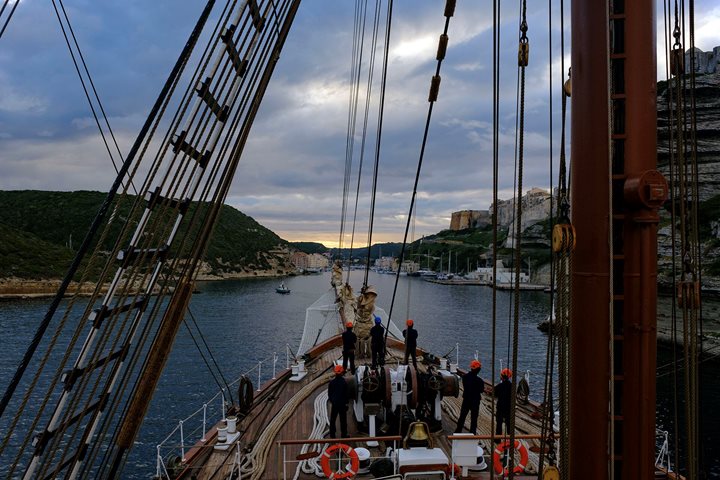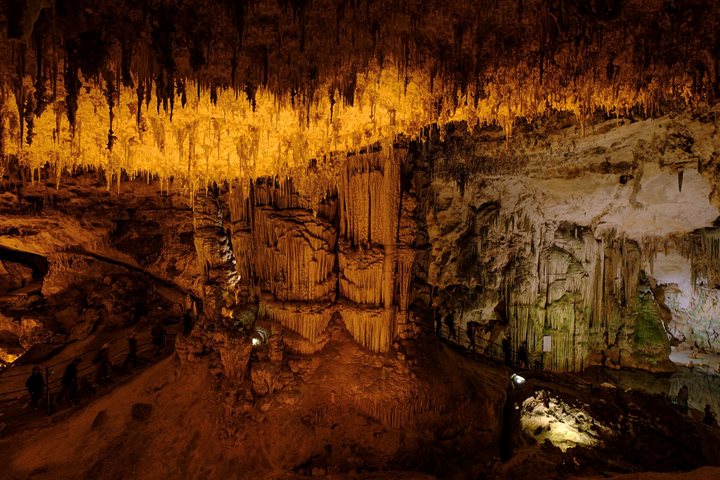We departed our berth in the coastal city of Almerias at 8AM enroute to the Alhambra. On our drive the blue Mediterranean was along one side and an arid mountainous landscape on the other. Within 40 minutes of our departure, we came to the “Sea of Plastic.” This term defines a region of greenhouses covered with plastic and seemed to stretch for about 40 miles. The fruits and vegetables from this area supplies virtually all of Europe. While it was not a particularly attractive area, it was most productive. It has a good aquifer to sustain the growing vegetables and the mountains of plastic are recycled.
We arrived at the Alhambra (the Red Fort) at 10AM and began our tour. The Alhambra Palace is in a large complex of palaces, gardens, and houses which were constructed under the Nazrids, the ruling Muslim Kings of Granada. It was begun in the middle of the 13th century (1248 CE) and largely finished by 1398. After the defeat of the Muslim forces in 1212, the resident Muslim rulers paid a tribute to the Christian rulers. In effect, they were clients of the Christian rulers. The architecture of the Alhambra is breathtaking and words fail to reveal its beauty. It combines a sensitivity to the environment, light, water features, and exquisite architectural motifs, like complex plaster vegetative and Kufic script elements.
As the last ruler of the Alhambra was forced from his city in 1492, he turned and wept. I think it worth noting that after 800 years, the Muslims were as true a resident of Spain as were the Christians. We visited the room where Washington Irving lived during his time in Granada, and I cannot recommend enough his “Tales from the Alhambra.” My favorite area in the palace is the Plaza of the Lions. There the 12 uniquely carved lions – deliberately reminiscent of the 12 Tribes of Israel, Christ’s Twelve Apostles, and the Twelve Companions of Mohammed – spout water which flows into four channels symbolic of the four rivers of Paradise. We completed our visit with a tour of the Generalife Gardens.
Lunch was in the five-star Hotel Sancta Paula which was until 25 years ago the cloister of the sisters of the Order of St. Jerome. We sat to eat in their former chapel which was situated just off their cloister. These nuns were cloistered which meant they did not leave their residence and eschewed contact with the outside world. Their life consisted of prayer and various types of work to maintain their self-sufficiency. The former chapel was an elegant setting, and we enjoyed a superb lunch. After lunch we boarded out coach for our journey back to Almerias and the Sea Cloud. Drinks on the Lido Deck in the late afternoon sun was followed by a fine dinner.









